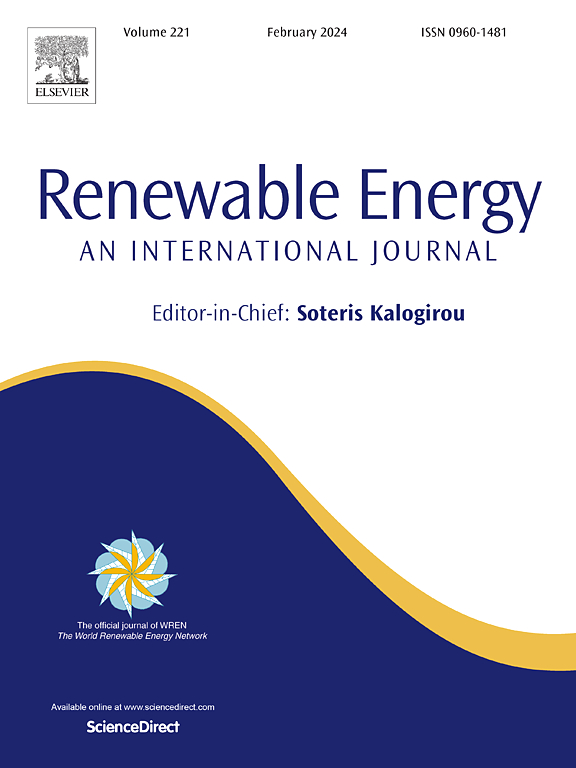晶体硅太阳能电池先进光管理的表面纹理:从亚微米金字塔制造到室外验证
IF 9.1
1区 工程技术
Q1 ENERGY & FUELS
引用次数: 0
摘要
硅微金字塔(SiMPs)是目前工业晶体硅太阳能电池中标准的织构结构。然而,它们的抗反射效果,特别是在斜角,是有限的。硅亚微米/纳米结构提供优越的广角光管理。本研究报告了一种快速、单步制备致密硅亚微米金字塔(SiSMPs,平均碱基为0.68-0.76 μm)的方法,即在常规碱性蚀刻剂中添加氧化铟锡,生成必需的成核剂。工程SiSMP结构表现出强烈的Mie散射共振,因此在宽波长范围内比SiMP结构具有更低的反射率。通过结合实验和模拟,我们证明了太阳能电池结构-与纹理表面上的涂层膜相关-必须适当选择,以有效地利用SiSMPs在所有波长上的光学优势。通过提高光学性能和改善银电极与硅表面之间的电流路径,sisps纹理太阳能电池的功率转换效率比simps纹理太阳能电池提高了1%。此外,这些电池显示出准全向抗反射性能,通过实验室测量和室外测试验证。得益于先进的光管理,SiSMPs纹理太阳能电池的日能量输出提高了6.8%,并且在阴影条件下表现出卓越的性能,这使SiSMPs成为未来晶体硅光伏电池的一种有前途的纹理。本文章由计算机程序翻译,如有差异,请以英文原文为准。
Surface texturing for advanced light management in crystalline silicon solar cells: From submicron pyramid fabrication to outdoor validation
Silicon micropyramids (SiMPs) are the standard texturization structure in the current industrial crystalline silicon solar cells. However, their antireflection effects, particularly at oblique angles, are limited. Silicon submicron/nanostructures offer superior broad-angle light management. This study reports a rapid, single-step method to fabricate dense silicon submicron pyramids (SiSMPs, average base of 0.68–0.76 μm) by adding indium tin oxide to a conventional alkaline etchant, generating essential nucleation agent. The engineered SiSMP structures exhibit strong Mie scattering resonances and consequently lower reflectance than SiMP textures across a broad wavelength range. Through combined experiment and simulation, we demonstrate that solar cell architecture - correlated with coating films on the textured surface - must be appropriately selected to effectively leverage SiSMPs' optical benefits across all wavelengths. With enhanced optical performance and improved current paths between Ag electrodes and the silicon surface, SiSMPs-textured solar cells achieve a 1 % absolute increase in power conversion efficiency over SiMPs-textured counterparts. Furthermore, these cells show quasi-omnidirectional antireflection performance, validated by both laboratory measurements and outdoor testing. Benefiting from advanced light management, SiSMPs-textured solar cells yield 6.8 % higher daily energy output and demonstrate superior performance under shaded conditions, positioning SiSMPs as a promising texture for future crystalline silicon photovoltaics.
求助全文
通过发布文献求助,成功后即可免费获取论文全文。
去求助
来源期刊

Renewable Energy
工程技术-能源与燃料
CiteScore
18.40
自引率
9.20%
发文量
1955
审稿时长
6.6 months
期刊介绍:
Renewable Energy journal is dedicated to advancing knowledge and disseminating insights on various topics and technologies within renewable energy systems and components. Our mission is to support researchers, engineers, economists, manufacturers, NGOs, associations, and societies in staying updated on new developments in their respective fields and applying alternative energy solutions to current practices.
As an international, multidisciplinary journal in renewable energy engineering and research, we strive to be a premier peer-reviewed platform and a trusted source of original research and reviews in the field of renewable energy. Join us in our endeavor to drive innovation and progress in sustainable energy solutions.
 求助内容:
求助内容: 应助结果提醒方式:
应助结果提醒方式:


